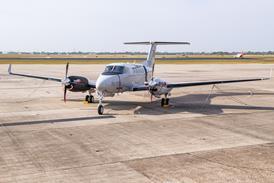Take-off performance monitoring (TPM) has been a holy grail for the whole industry – airlines, research organisations, regulators and avionics manufacturers – for 20 years, but such a system has proved as elusive as that legendary relic. And not for lack of trying.
Now, however, in its report on a tragic take-off accident, the Transportation Safety Board of Canada is appealing for industry to make another attempt to develop a viable TPM system.
The problem has always been that the number of variables potentially affecting take-off performance is so great that in presenting the pilots with information from which they can make a snap stop-go decision, it may not be enough to tell them something is amiss. They also need to know what is wrong. And the potential for information overload at a maximum-workload moment is considerable indeed.
The same factor – the number of variables and the potential for a system to misinterpret the relative effects of multiple causal factors – makes false alarms likely, leading to unnecessary abandoned take-offs and traffic disruption.
Simplicity may be the key – at least until aircraft have totally integrated control and avionic systems. It may be best, for now, just to warn pilots that acceleration is slower than it should be given the engine power output and runway conditions.
Source: Flight International























